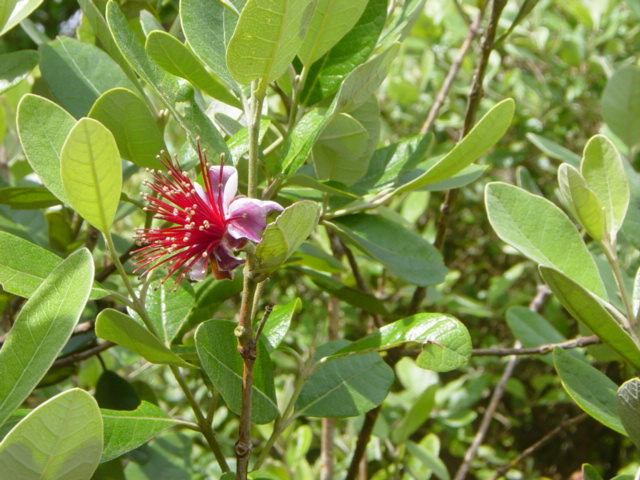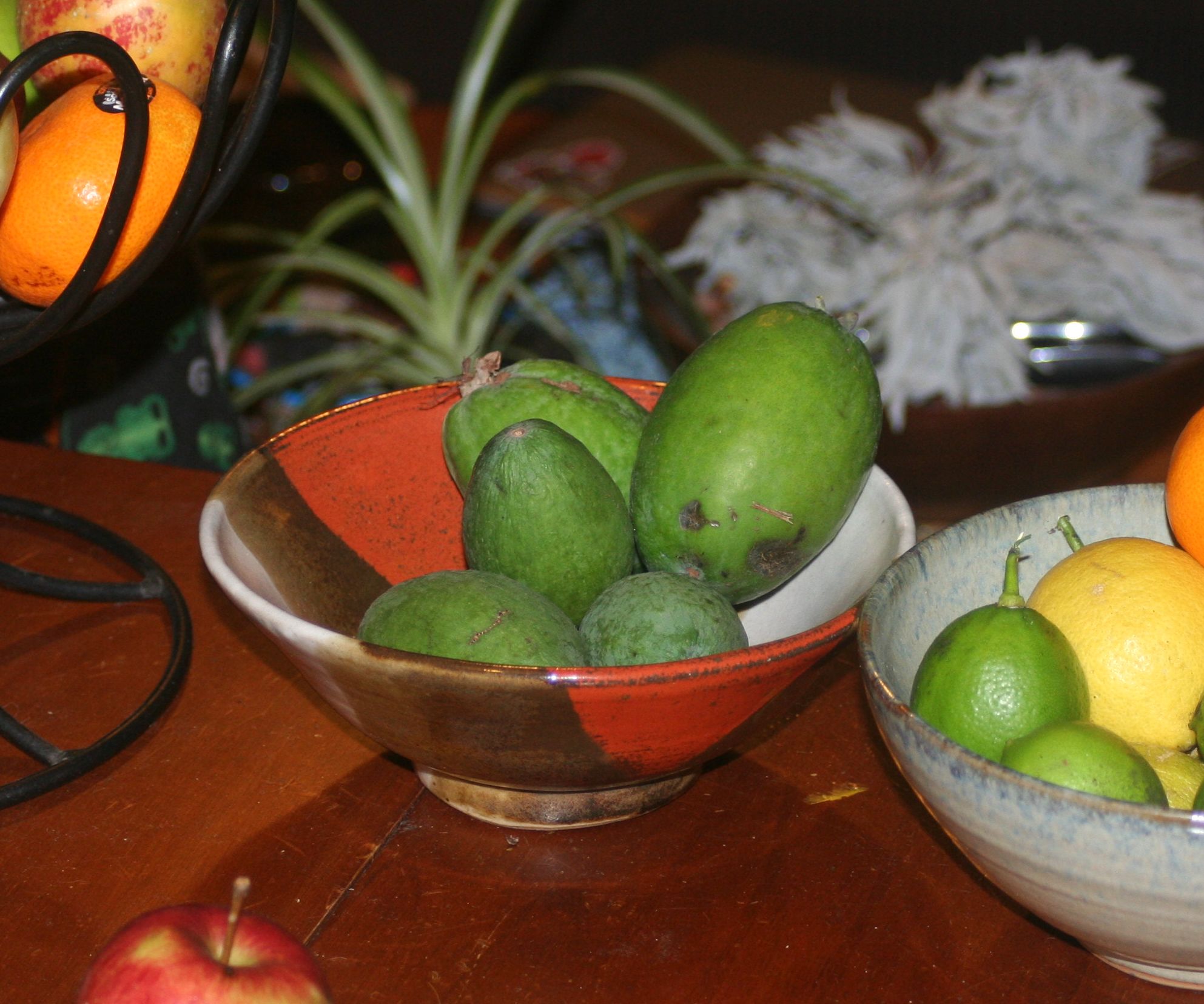Dial-a-Tree Virtual Tree Nursery
Tree Stuff Blog
Guavas - A New Zealand Speciality - by Ben Gaia, www.dialatree.co.nz
www.dialatree.co.nz
Myrtles
NZ has many natives from the myrtle family: iconic pohutukawa; the rata family; manuka and its hefty cousin kanuka. All are myrtles, with pungent leaves and pretty flowers - as are eucalyptus - which any farmer knows grow like weeds almost anywhere.
Feijoas. Red guavas. New Zealand Cranberries. All the same family; all from South America, none of them needs a tropical climate to grow. And the feijoa flowers are dramatic and beautiful.

These three fruits are all guavas and they grow happily in Aotearoa. All over the place, except where there is settled snow in winter. Being from mountainous areas, although in the tropics, these fruit bushes grow high up in the South American foothills where there are cool microclimates: a temperature range, like ours, from zero to twenty is ideal for guavas. Basically colour in the map guava-coloured, from Northland right through to Coastal Otago, with the Desert Plateau and the Alps left out. They all love full sun, well drained soil, and lots of water.
The well known South African yellow guavas and the big pink Asian ones on juice packets, both struggle to grow here south of Auckland. They need a keen devoted gardener and tunnel house, possibly including a hot water heating system. But for that same intense sweet tropical flavour, pop a red guava bush or three into your unheated tunnel house - or outside where there is no frost. Your soft red winter fruits will have you salivating in only three years. Spitting is involved when eating the red guavas which are full of seeds that may lodge in tooth crevices for weeks. It is best to stand near the bush, absorbing the juicy delicious bits and spitting out the pips. These guavas hardly ever make it as far as the kitchen, but their colour looks great with fresh fruit salads and cream (with the pips removed).
 Red guavas fruiting under cover, autumn
Red guavas fruiting under cover, autumn
Feijoas have been improved...they are so big and healthy nowadays you can almost carve out a room and live inside one. They like a bit of a cool winter and dislike strong salt winds. They grow much bigger than the others and need a constant top-up mulch of weeds, compost, manure, dolomite, fish, seaweed, etc for good fruit. When the trees get over your head it is best to start shaping and topping them so they don't end up too tall and leggy. The bushes must be pruned open to allow birds to fly through and wipe the pollen from one flower to another. Plant the huge fruit ones: Apollo, Unique, Mammoth, Wiki Tu. They are "next level" now compared to those old-time seedling hedges with knobby little fruits. Watering them helps a better fruit set.
Feijoas taste like plastic or bubblegum raw, so some people think they are horrible. Eat them ripe when they turn more yellow. But cooked they are like a divine rhubarb sweet-sour mix which goes with apples in a crumble or pie. Ginger brings their flavour out and they are great in traditional stewed fruit desserts with vanilla custard or pastry.
 Westland feijoas did well this year!
Westland feijoas did well this year!
For the small berry garden there is the NZ Cranberry, also called Chilean Guava and Myrtus ugni. Trimmed to a small bush or a low hedge it will pop out purple berries every summer which the birds leave for children's hands to find. The flavour is like strawberries and cream with no pips but a little hard calyx which should be removed for cooking. Their culinary high point is to be simmered in a venison, hare, or similar lean steak sauce with peppercorns.
 New growth on Myrtus ugni bushes is red
New growth on Myrtus ugni bushes is red
We grow guavas, and timber trees in the extreme climate of the South Island. Explore our mail order nursery for organic fruit and forestry trees.
Back to dialatree www.dialatree.co.nz

 Red guavas fruiting under cover, autumn
Red guavas fruiting under cover, autumn Westland feijoas did well this year!
Westland feijoas did well this year! New growth on Myrtus ugni bushes is red
New growth on Myrtus ugni bushes is red